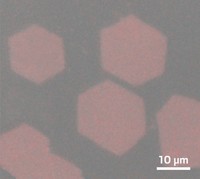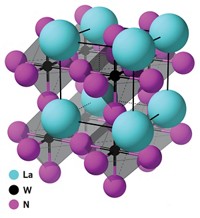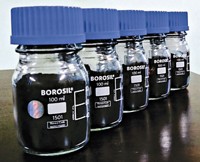Advertisement
Grab your lab coat. Let's get started
Welcome!
Welcome!
Create an account below to get 6 C&EN articles per month, receive newsletters and more - all free.
It seems this is your first time logging in online. Please enter the following information to continue.
As an ACS member you automatically get access to this site. All we need is few more details to create your reading experience.
Not you? Sign in with a different account.
Not you? Sign in with a different account.
ERROR 1
ERROR 1
ERROR 2
ERROR 2
ERROR 2
ERROR 2
ERROR 2
Password and Confirm password must match.
If you have an ACS member number, please enter it here so we can link this account to your membership. (optional)
ERROR 2
ACS values your privacy. By submitting your information, you are gaining access to C&EN and subscribing to our weekly newsletter. We use the information you provide to make your reading experience better, and we will never sell your data to third party members.
Materials
Graphene From Garbage
Materials: Low-value, impure carbon sources yield high-quality graphene
by Mitch Jacoby
August 8, 2011
| A version of this story appeared in
Volume 89, Issue 32
Garbage and other low-value materials make excellent starting materials for high-quality graphene, according to a study by Rice University chemists in ACS Nano (DOI: 10.1021/nn202625c). The report describes a straightforward procedure to convert inexpensive sources of carbon—even “negative value” materials such as dog feces—to ultrathin films of pure carbon.
Graphene’s large collection of outstanding mechanical, electronic, thermal, and other properties have prompted many scientists to search for ways to prepare large sheets of this often one-atom-thin form of carbon. Several chemical vapor deposition methods do that job well, but they generally require expensive substrates on which to grow graphene and/or reagents such as methane, acetylene, and organic solids that must be purified before use.
The Rice team, led by James M. Tour, has shown that there’s no need to use costly purified starting materials to grow graphene. The team, which also includes Gedeng Ruan, Zhengzong Sun, and Zhiwei Peng, prepared graphene from feces, grass, a cockroach leg, bulk polystyrene, chocolate, and Girl Scout cookies.
In all cases, the group placed a solid sample on copper foil in a quartz boat and briefly heated the material to 1,050 °C under a low-pressure hydrogen-argon flow. The team reports that residues containing several elements remained on the sample side of the foil after heat treatment. On the back side, however, they found pristine and nearly defect-free graphene, as judged from analyses based on Raman, UV-visible, and X-ray photoelectron spectroscopies and microscopy analysis.
“These results show convincingly that large-scale high-quality graphene can be grown from impure carbon sources with low or negative values,” says Changgan Zeng of the University of Science & Technology of China, Hefei. “This is quite amazing, since we usually assume that high-quality graphene requires pure carbon sources,” Zeng says. He adds that “the idea is brilliant,” but the mechanism by which graphene forms on the back of the foil is still unknown.





Join the conversation
Contact the reporter
Submit a Letter to the Editor for publication
Engage with us on Twitter